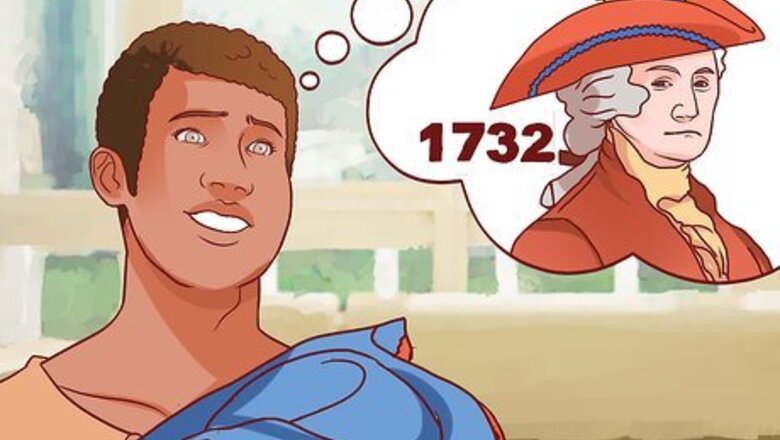
views
Creating Associations
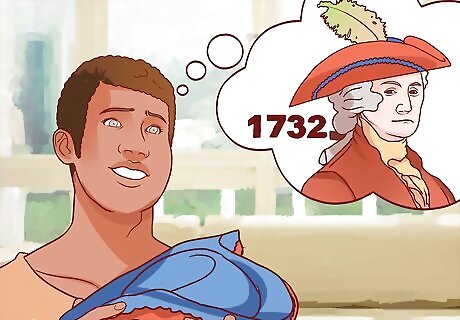
Create strong visualizations. If you can create vivid images to associate with a date, you will have a much easier time remembering it. The more ridiculous, silly, and strange the image, the better! For example, if you are trying to remember the date 1732, the year in which George Washington was born, every time you think of that date, imagine a small boy wearing a Washington-type wig and chopping down a cherry tree while saying “I cannot tell a lie!” Similarly, you could also imagine a person dressed as George Washington “making it rain” with $1,732 dollars in one-dollar bills (which feature a portrait of Washington on the front).
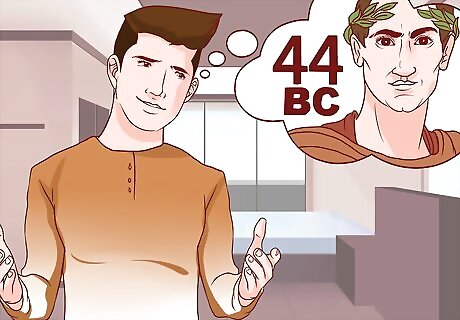
Use your body. You can create very strong associations by actively using your body when trying to memorize dates. Pacing while you study, creating hand motions to learn along with certain dates, and even singing out dates can all improve your memory. For instance, you could: Raise your arm up dramatically like a Roman orator when trying to remember the date 44 BC, the year in which the Roman Emperor Julius Caesar was assassinated. Memorize dates by singing them to the melody of your favorite song.

Organize your information. If you can group the dates you need to learn in any meaningful way, you will have a much greater chance of memorizing them. This is because it is very difficult to memorize a set of unconnected bits of information. As you spend time each day practicing the dates you need to remember, look for ways to classify and organize them. For instance: If you are learning a set of historical dates, make a timeline as you seek to memorize them. This helps to put the dates in some kind of relation to each other, and to show logical connections between them. The more you can contextualize the dates, the more meaning they will have to you; the more meaning they have, the greater your chances of remembering them. If you are learning birthdates of your family members, map them out on a family tree that you draw out. As you practice memorizing the dates each day, you can visualize “climbing” the family tree to recall all of the dates.
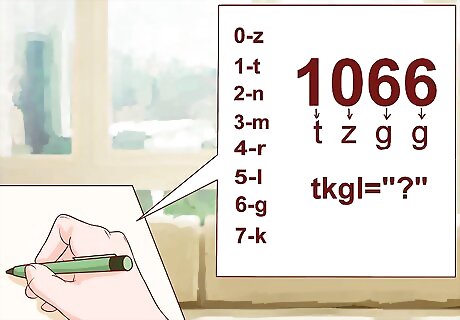
Assign a letter to each number in the date. You can improve your memory by creating associations, such as between a letter and a number. For example, you could memorize the date “1066” (the year of the Battle of Hastings), the date “1215” (when the Magna Carta was drafted), or the date “1776” (the year of the signing of the Declaration of Independence), by associating them with the alphabetic strings “TZGG,” “TNTL,” and “TKKG,” respectively, according to the following scheme: 0 = Z, because the word “zero” begins with “z” 1 = T, because the numeral “1” and the letter “T” are both written with a single downstroke 2 = N, because if you rotate the letter “N” clockwise ninety degrees, it resembles the numeral “2”) 3 = M, because if you rotate the letter “M” clockwise ninety degrees, it resembles the numeral “3”) 4 = R, because the numeral “4” looks like a backwards letter “R” (and the word “four” also ends in the letter “R”) 5 = L, since “L” is the Roman numeral for “50” 6 = G, since the numeral “6” and the letter “G” resemble each other 7 = K, because if you rotate the letter “K” clockwise, it resembles the numeral “7” mirroring itself 8 = B, since the numeral “8” and the letter “B” resemble each other 9 = P, since the letter “P” looks like a mirror image of the numeral “9”
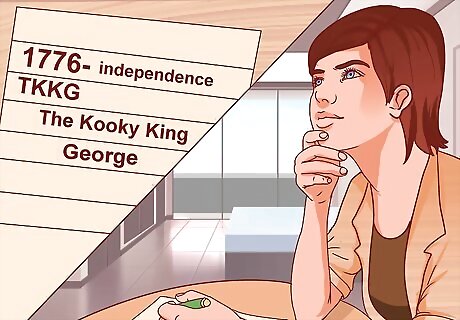
Make detailed associations. You will recall things like dates better if you can make more detailed and illustrative associations. One technique is to use the strings of letters you form using the previous step to develop fun and memorable sentences. For example, imagine: You are trying to memorize the date “1776,” the year the Declaration of Independence was signed. You form the string of letters “TKKG” using the previous step. You develop the phrase “That Kooky King George,” where the first letter of each word in the phrase corresponds to the string of letters “TKKG” This phrase will help you remember the date because it uses the string of letters associated with “1776,” and because the Declaration of Independence was written to declare the independence of the American colonies from Great Britain, which was ruled at the time by King George III.
Practicing Your Memory

Concentrate on the dates you need to learn. We often immediately lose 50% of what we are studying, so it is very important to concentrate when studying dates. You can begin by simply reminding yourself that you want to and/or need to remember the dates. Concentrating in this way can help you remember 20% to 60% more information. There are various practical ways to concentrate while studying. For instance: Reduce distractions; try to study in a quiet, stress-free environment. Intentionally focus your eyes on a written date that you are trying to memorize. "Trace" the date with your eyes. When you come across a date you need to learn, take a moment and carefully write it out, thinking “I need to remember this” as you do. Visualize yourself writing the number any time you think of it. For instance, imagine yourself writing the date on a chalkboard in your mind.
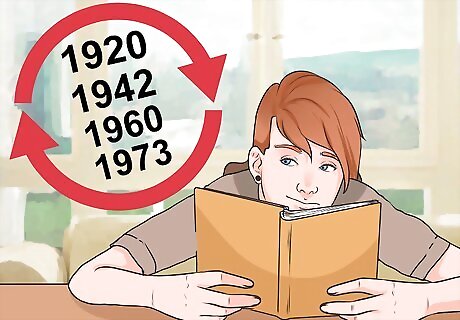
Repeat the dates frequently. The more you can repeat information you need to learn, the more likely you are to memorize it. Since we lose the greatest amount of information within 24 hours of learning something, it is important not just to repeat the information immediately, but frequently. If you keep practicing and going over dates every day, you increase your recall and memory; if you keep trying to memorize them for thirty days, you are likely to remember them for years to come. If you need to learn a set of dates for an exam or other purpose, go over them as frequently as you can, spending at least a few minutes each day reviewing the information.
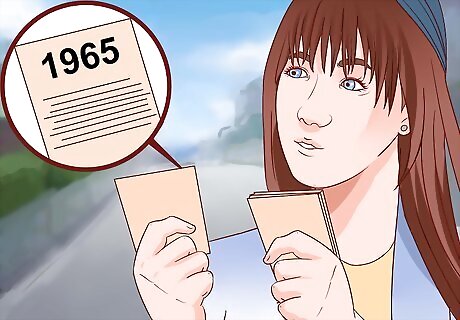
Use flash cards. Flash cards are a common way to practice memorizing information. If used correctly, they can be a big help. Using a set of cards (or an electronic flash card program), write each date you need to memorize on one side of a card, and the significance of that date on the other side. Quiz yourself by shuffling the cards, looking at the date on each one, and seeing if you can remember the significance of it. You can also reverse the cards and look at the “significance” side, and see if you can recall the date associated with it. As you go through the cards each session, take out the ones that you remember well, and repeat the ones you cannot, until you can remember all of the dates. Practice using the flashcards frequently, but work in small bursts of just a few minutes at a time. If you try to memorize too much at one time, the information won’t really stick.
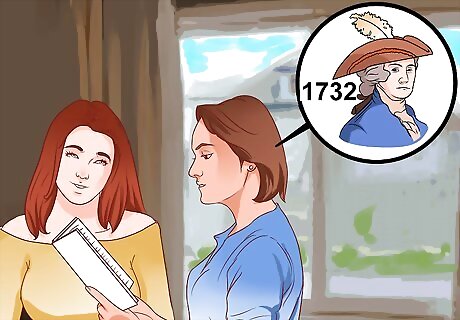
Use the dates. The more you use the dates you need to learn, the more likely you are to remember them. Talk about the dates you are learning with family and friends, think about them to yourself, and write about them whenever you can. Keep doing this, and you’ll memorize them all!




















Comments
0 comment